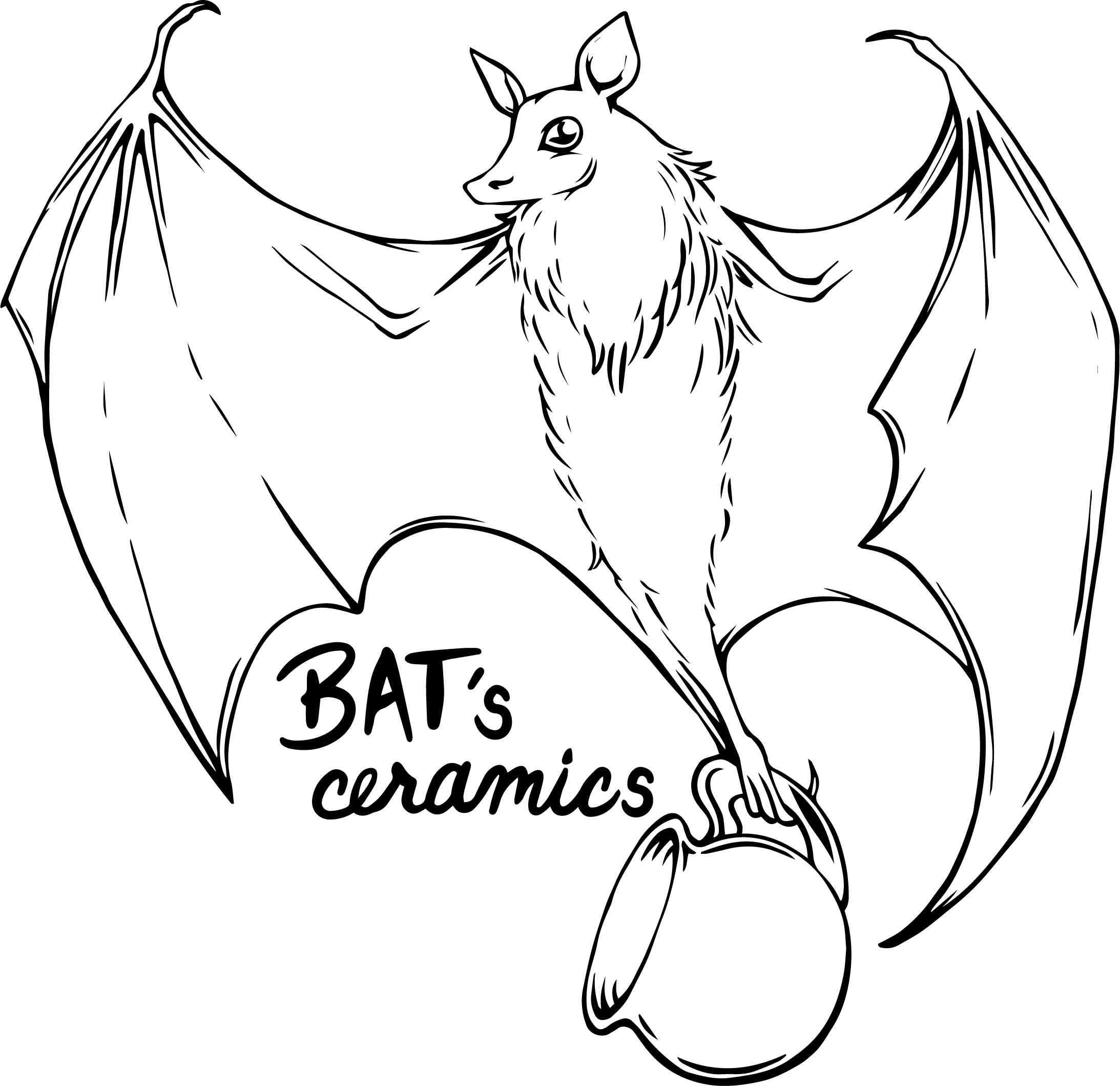FLAMINGOS
February 2021
Coming off my fruit bat collection I was feeling burnt out, at a loss of color. We were also in the depths of winter by this time, so I needed something to lift my spirits. I ended up turning my winter blues to pink by painting flamingos!
The only thing that I could think of that fit in the tropical flamingo theme was seashells. These were my first of many seashell mugs! I kept the top right red shell for myself! Behind each painted flamingo there are carved standing flamingos, glazed to mimic the species depicted.
I’ve always had a fascination with flamingos since college when I dove down a rabbit hole of bird species. I’ve painted many birds throughout the years and more to come!
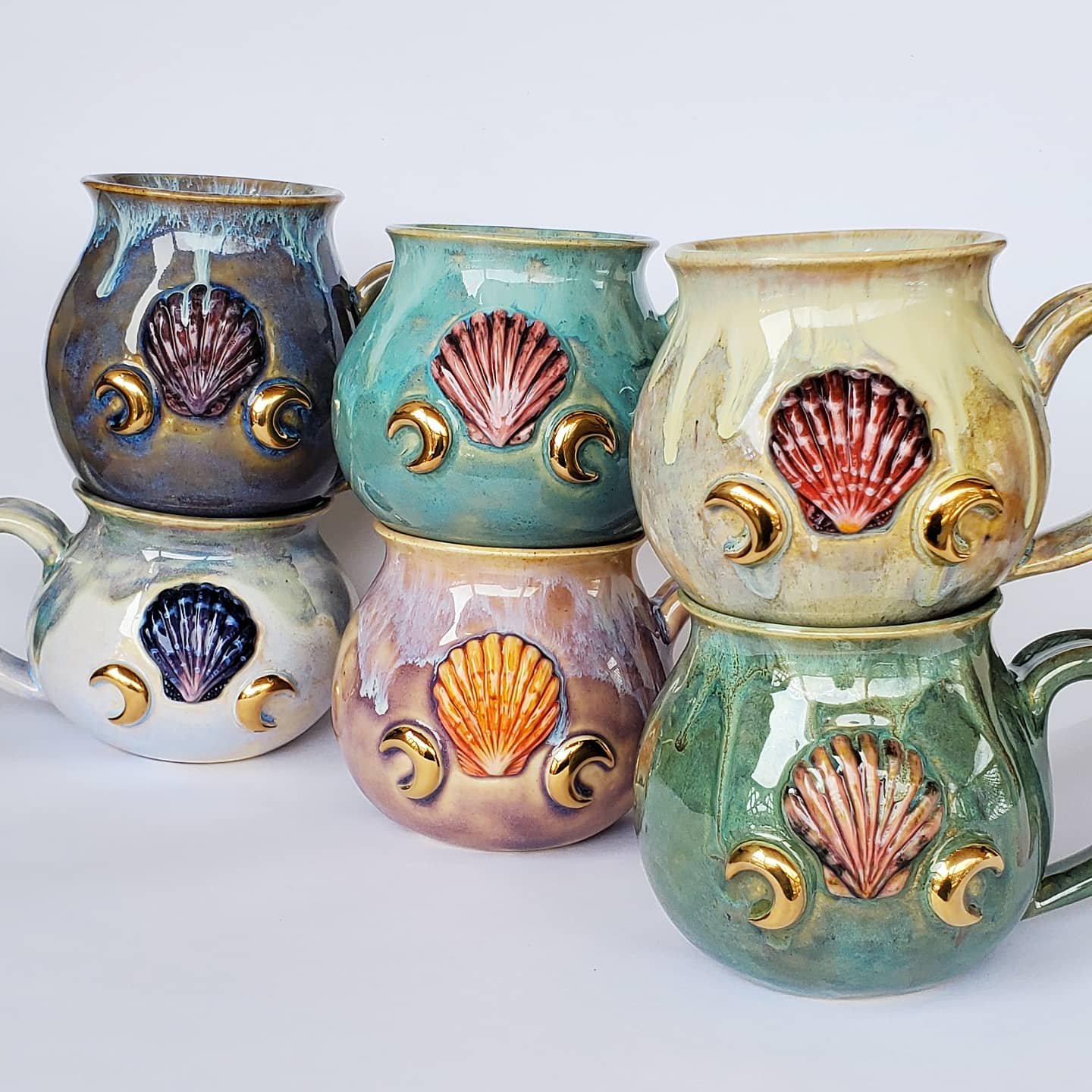
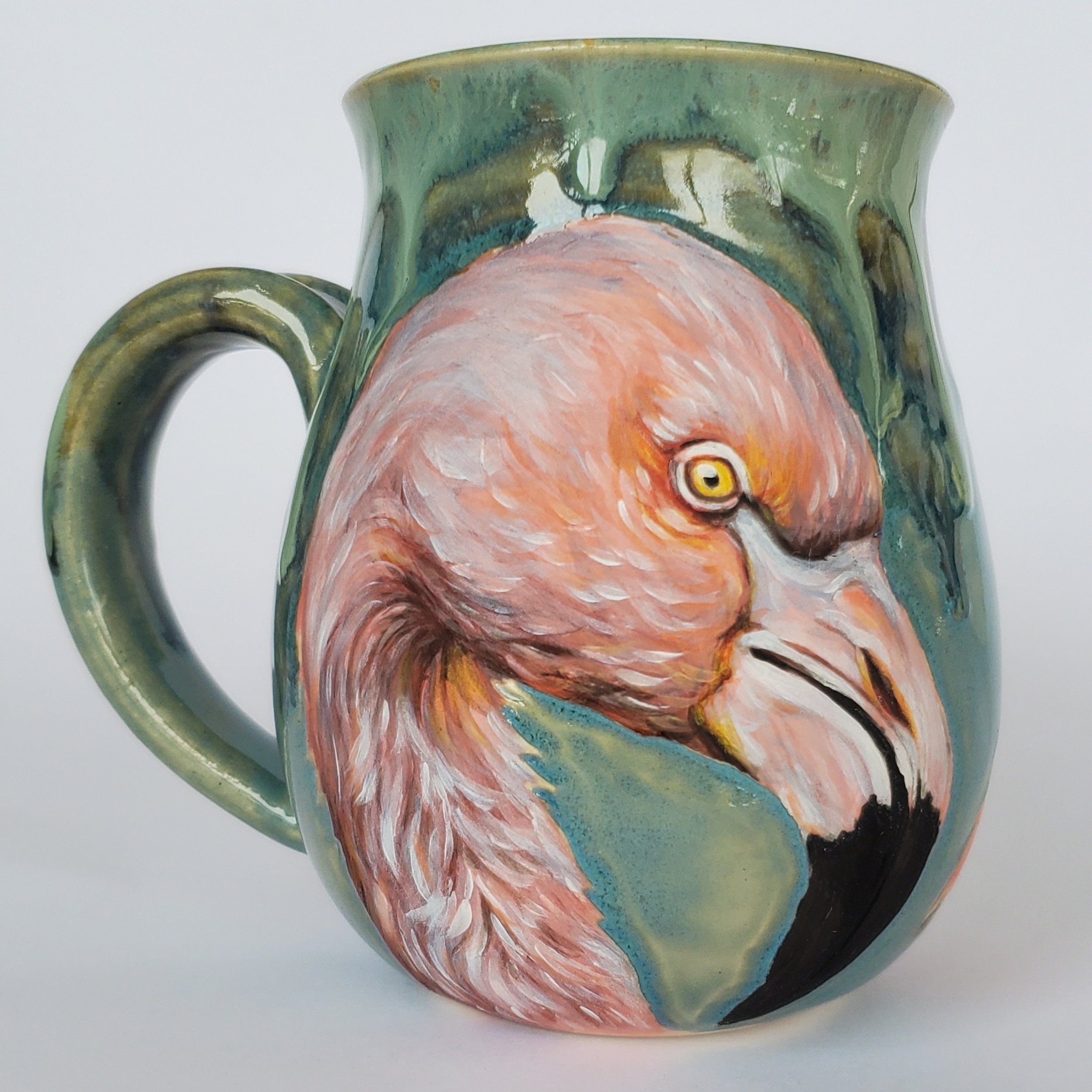
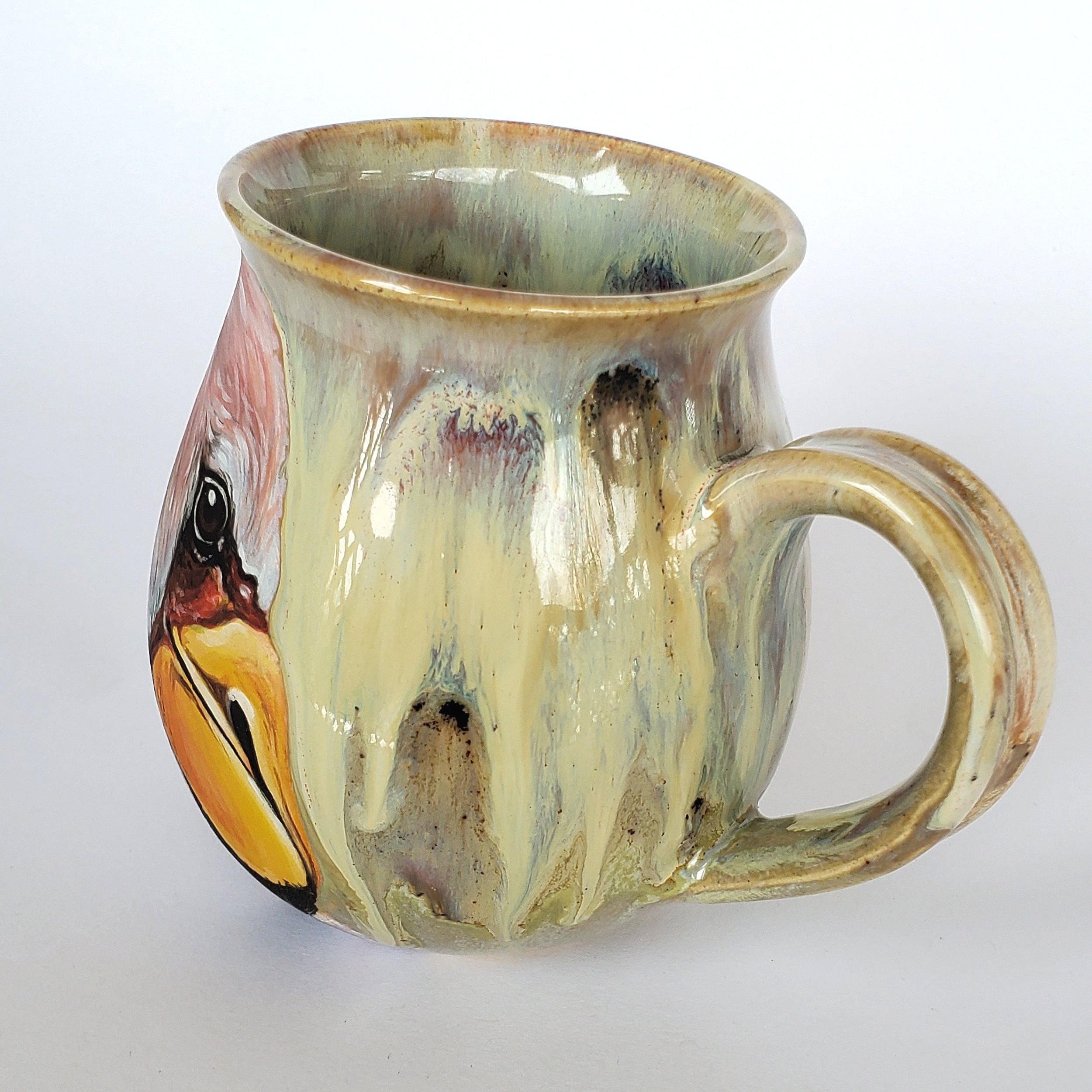

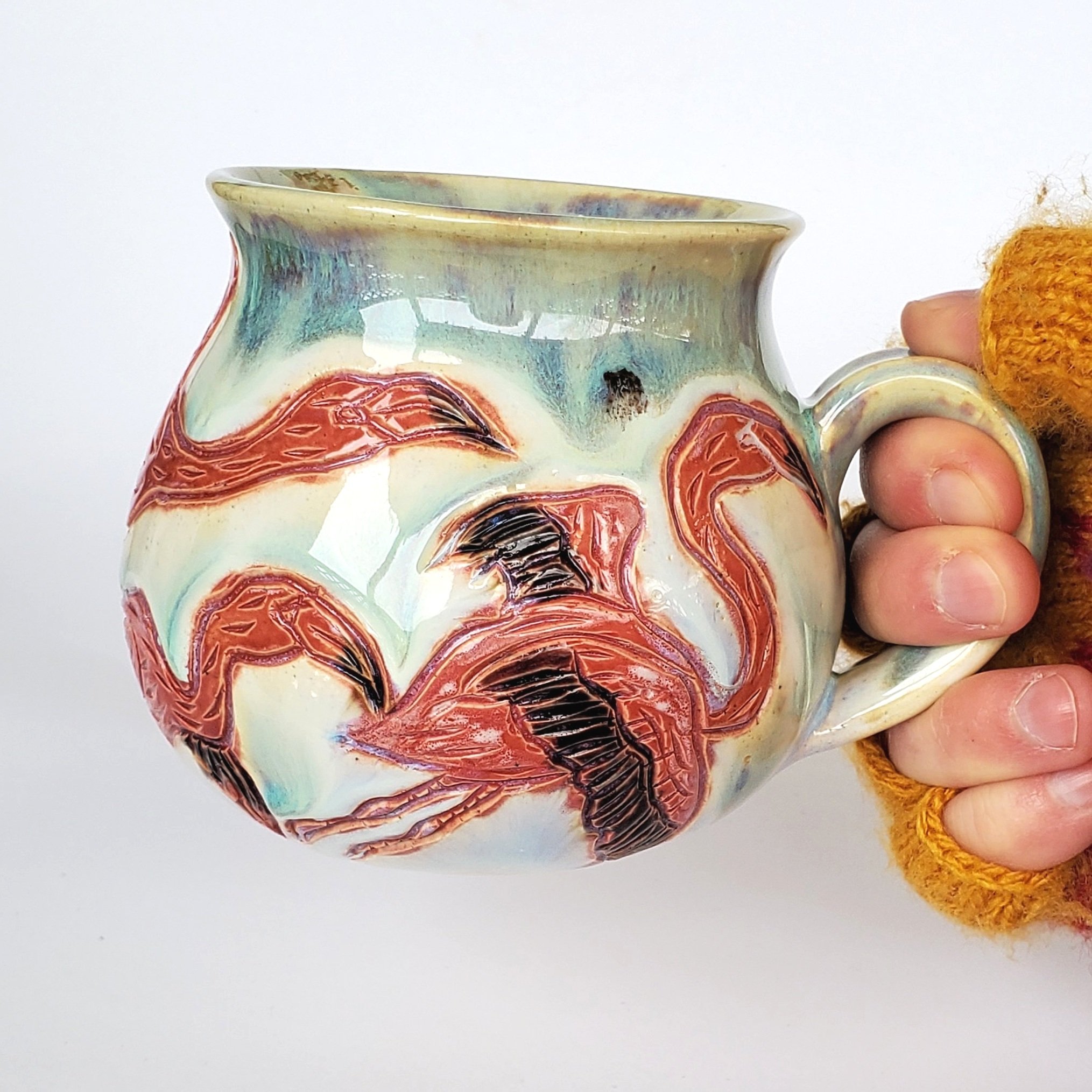
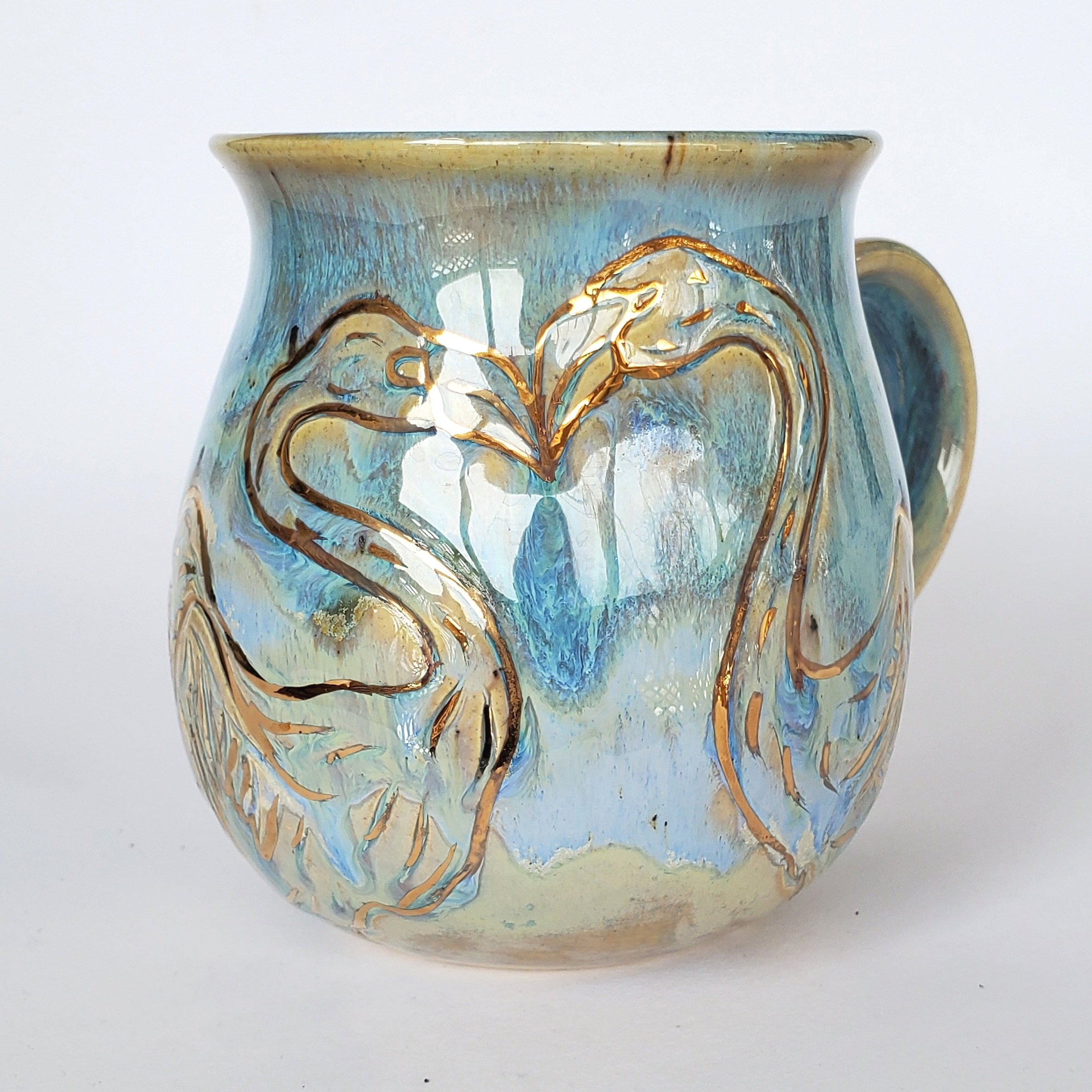
Flamingo facts-
Flamingos eat spirulina algae which is responsible for their pink plumage.
The most popular flamingo because of its bright pink color is the American flamingo, also known as the Caribbean flamingo. Native to the Caribbean islands, these flamingos grown to 120-145 cm tall.
The Greater flamingo is the largest of the flamingos standing at150 cm tall. Native to the middle east, Africa, and southern Europe. Their body plumage is light pink/white with a light pink bill.
James’ flamingo are native to the high-altitude regions of the Audean plateau, Chile, Bolivia, and northwest Argentina. Their bill is bright yellow and have red legs, and dark eyes.
Andean flamingos have pale yellow bills with yellow legs. Native to south Africa and threatened by mining and habitat loss.
Lesser flamingos are from India and Africa. They are the smallest species of flamingo standing at 80-90 cm. They are threatened by heavy metal poisoning leaking into their habitat.
Chilean flamingo breeds in south America but has been introduced to many countries. They are light pink with an almost white bill with grey legs.
Flamingos have teeth very much like a whales. They place their head in water upside down, while moving their head side to side while their prey strains through their teeth.
A flamingo’s diet consists of algae, crustaceans, mollusks, and small fish.
